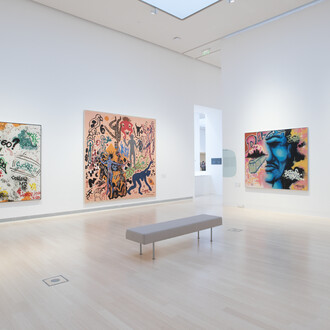It was an extraordinary situation, even for a photo-museologist who has seen much (sometimes even too much) anyway, when the photographer Ádám Urbán entered the gates of the Aszód Juvenile Detention Center for the first time in his life, at the beginning of 2017.
Like father, like son: this first visit was followed by countless more, similarly to the year 1975, when Tamás Urbán, gathering all necessary clearances, visited the – back then – municipality almost every week, specifically one special part of it, the brick buildings built in the previous century, standing on the hill. Tamás Urbán was studying at the Journalism School of the Association of Hungarian Journalists (MÚOSZ) right around that time, and this became his portfolio. He took his photographs on black and white film, but he did not only take pictures. He also talked to the kids there, he did smaller or bigger favors for the tough guys, he listened to their grievances, and in turn, they wrote him letters and journals, gave him drawings… It also grew into something more than a report. This was the place where his – by now – well-discernible approach was formed, his ethical perspective, his humanistic photojournalist attitude that is more than just carrying out a task and then leaving in a rush. All of which make the most significant units in the oeuvre of Tamás Urbán stand out in comparison with others’ photo reports, however good they may be. After Aszód, it was the ambulance, then prisons, then drug addicts, then prostitutes, and finally, there came the series about ‘the Butterfly,’ which encompasses all this probably the most graphically.
But these are separate stories, let us stick to Aszód now. Back then, the exhibition was opened by Éva Keleti, on December 13, 1975. Keleti was his teacher in the journalism school, and there was another speaker, a comrade, a superior authority. To Keleti’s suggestion that this work was worth presenting in the capital as well, the comrade clearly indicated right there at the opening ceremony, that the exhibition was never to leave the premises of the institution. And so it happened. The copies were stored in a dry room for forty years, and later they hung several of them in their internal museum as well. When we first visited there and saw the images from this bygone exhibition, all three of us had a similar feeling than when the Magnum’s First exhibition was discovered in a warehouse the same way it was taken off the walls in 1954. The 40-year-old copies discovered here, in Aszód, were supplemented by the pictures taken by Ádám Urbán, photographed with the technology of the 21st century.
He did not mimic his father, and he did not do a remake of the existing images: he just set foot in the situation, like his father before him, and photographed how a present-day photographer saw the present-day inmates of the century-old institution. And this is what lends an interesting passage to these two sets of photographs that are remarkable on their own right as well, creating a dialogue that shouts over a time period of forty years. Presenting the same theme in the particular language of two generations, the changing people and the yet identical situations… in the distinctive and still, in many ways so similar delivery of the two Urbáns. (Károly Kincses, photo museologist)
The Aszód Juvenile Detention Center is a special place: living here temporarily is both a punishment and an indispensable help for the inmates. Once you have visited there, you will surely not forget – I know it from my own first-hand experience. As a photographer, I spent some time inside the last year with the guys living there; most of them were there for theft, robbery or some other kind of crime. I got a peek into how their closed community, which rejects all outsiders, operates.
At first, they did not accept me either but then they got used to my presence; they started to like me and let me in their inner circle. It says a lot that even this way I could only take my first pictures after a month or so; until then, I walked among them without my camera. The staff shortly recognized my well-intentioned approach: I received a key that opened all doors, and I was free to move around in the institution. While I was inside, I encountered some tense situations, some of which I managed to sort out with the help of my camera. I had several positive experiences as well – they gave me lots of gifts, which they themselves made for me. At the same time, I learned some things about them, which the outside world would not know. Some of the inmates are very talented: they wrote poetry, sang very well, or were great at dancing. These experiences and pieces of information are not only recorded in the final photographs, but they are also permanently imprinted in me. (Ádám Urbán, photographer)
















